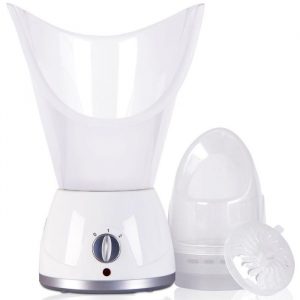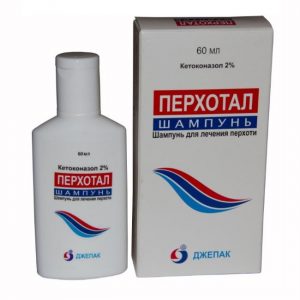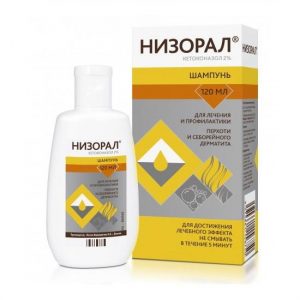Description
Pharmacological action
Antifungal. It has fungicidal and fungistatic effects. The mechanism of action is to inhibit the synthesis of ergosterol and change the lipid composition of the membrane. It is active against the causative agent of multi-colored lichen Malassezia furfur, the causative agents of certain dermatomycoses (Trichophyton, Epidermophyton floccosum, Microsporum), the causative agents of candidiasis (Candida), as well as the causative agents of systemic mycoses (Cryptococcus).
Also active against gram-positive cocci: Staphylococcus spp., Streptococcus spp.
Pharmacokinetics
Ketoconazole is a weak dibasic compound that dissolves and is absorbed in an acidic environment. Cmax of ketoconazole in plasma is about 3.5 Ојg / ml and is achieved 1-2 hours after a single oral dose of 200 mg with meals. The bioavailability of ketoconazole is maximal when taken with food. Ketoconazole absorption is reduced in patients with reduced acidity of gastric juice, for example, taking antacids such as aluminum hydroxide and antisecretory drugs such as histamine H2 receptor blockers and proton pump inhibitors, as well as in patients with achlorhydria caused by a certain disease.
Binding to plasma proteins, mainly to the albumin fraction, is 99%. Ketoconazole is widely distributed in the tissues, but only a small part of the drug penetrates into the cerebrospinal fluid.
After absorption from the digestive tract, ketoconazole is metabolized in the liver to form a large number of inactive metabolites.
In vitro studies have shown that the isoenzyme CYP3A4 is involved in the metabolism of ketoconazole. The main metabolic pathways are the oxidation and cleavage of the imidazole and piperazine rings, oxidative O-dealkylation and aromatic hydroxylation. Ketoconazole is not an inducer of its own metabolism. Excretion from plasma is two-phase: during the first 10 hours, T1 / 2 is 2 hours, in the subsequent 8 hours.
About 13% is excreted in the urine, of which 2-4% is unchanged. It is excreted mainly with bile in the digestive tract and about 57% is excreted with feces.
Composition
In 1 g of ointment ketoconazole 20 mg.
Dosage and administration
For external and local use, the dosage regimen depends on the indications and the dosage form used.
Side effects
From the nervous system and sensory organs: headache, dizziness, drowsiness, paresthesia.
From the gastrointestinal tract: loss of appetite, nausea, vomiting, diarrhea, abdominal pain, increased levels of hepatic transaminases in the blood, jaundice, hepatitis (high mortality, the risk increases with more than 14 days).
From the genitourinary system: gynecomastia, decreased libido, impotence, oligospermia, menstrual irregularities.
Allergic reactions: urticaria, pruritus.
Other: photophobia, alopecia, arthralgia, fever, thrombocytopenia local reactions – hyperemia and irritation of the vaginal mucosa, itching of the vagina (suppositories), local skin irritation, burning, rash, contact dermatitis (cream, ointment) irritation, itching and burning of the skin, increased oily or dry hair (shampoo).
active substance
ketoconazole
Dispensing conditions at pharmacies
Over-the-counter
Murom Instrument Making Plant, Russia




